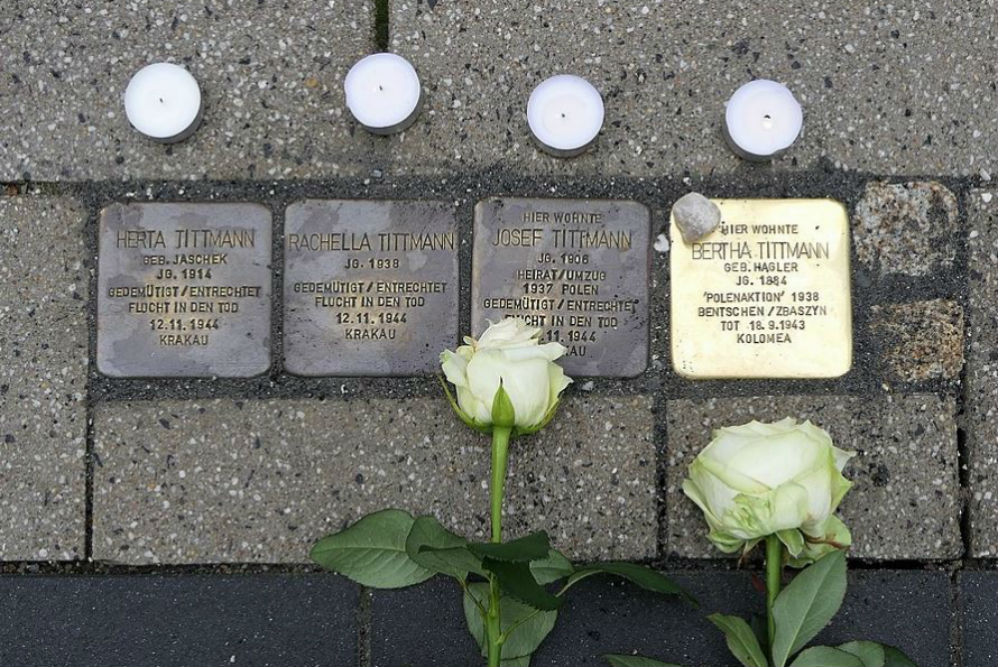Stumbling Stones Annenstraße 20
These small, brass memorial plaques (Stolpersteine or stumbling stones) commemorate:
* Herta Tittmann née Jaschek, born 1914, humiliated / deprived of her rights, committed suicide, 12 November 1944, Krakau.
* Rachella Tittmann, born 1938, humiliated / deprived of her rights, committed suicide, 12 November 1944, Krakau.
* Josef Tittmann, born 1906, married, moved to Poland 1937, humiliated / deprived of his rights, committed suicide, 12 November 1944, Krakau.
* Bertha Tittmann née Hagler, born 1884, ‘Polenaktion’ 1938, Bentschen/Zbaszyn, dead 18 September 1943, Kolomea.
Stolpersteine were installed first for Herta, Rachella, and Joseph Tittman in 2014. Four years later, the Stolperstein for Joseph’s mother, Bertha Tittmann, was installed.
Bertha Tittmann became a widow in 1919. Her oldest son Josef married and from 1935 lived with his wife, Herta, and daughter, Rachella, in Kattowitz. A year after his mother was expelled from Germany to the Bentschen/Zbaszyn internment camp, Josef managed to get her out. But on 28 October 1938, the Polish authorities forced her to move to Kolomea (in Ukraine), where she died at age 59, six months before the Soviet Army liberated it.
No other information was found on Josef, Herta, and Rachella Tittmann. Also, no further information was found on Bertha Tittmann’s story of surviving in Kolomea until autumn 1943 after 60,000 Jews were either murdered there or deported to the Belzec death camp in 1941-1942. At the end of the war, only 200 Jews remained in Kolomea.
"Stolpersteine" is an art project for Europe by Gunter Demnig to commemorate victims of National Socialism (Nazism). Stolpersteine (stumbling stones) are small, 10x10cm brass plaques placed in the pavement in front of the last voluntary residence of (mostly Jewish) victims who were murdered by the Nazis. Each plaque is engraved with the victim’s name, date of birth, and place (mostly a concentration camp) and date of death. By doing this, Gunter Demnig gives an individual memorial to each victim. One stone, one name, one person. He cites the Talmud: "A human being is forgotten only when his or her name is forgotten."
Do you have more information about this location? Inform us!
Source
Nearby
Monument
- Memorial Old Synagogue Chemnitz - Chemnitz
- Memorial Victims National-Socialism - Chemnitz
- Memorial Perished German Prisoners-of-War - Chemnitz





